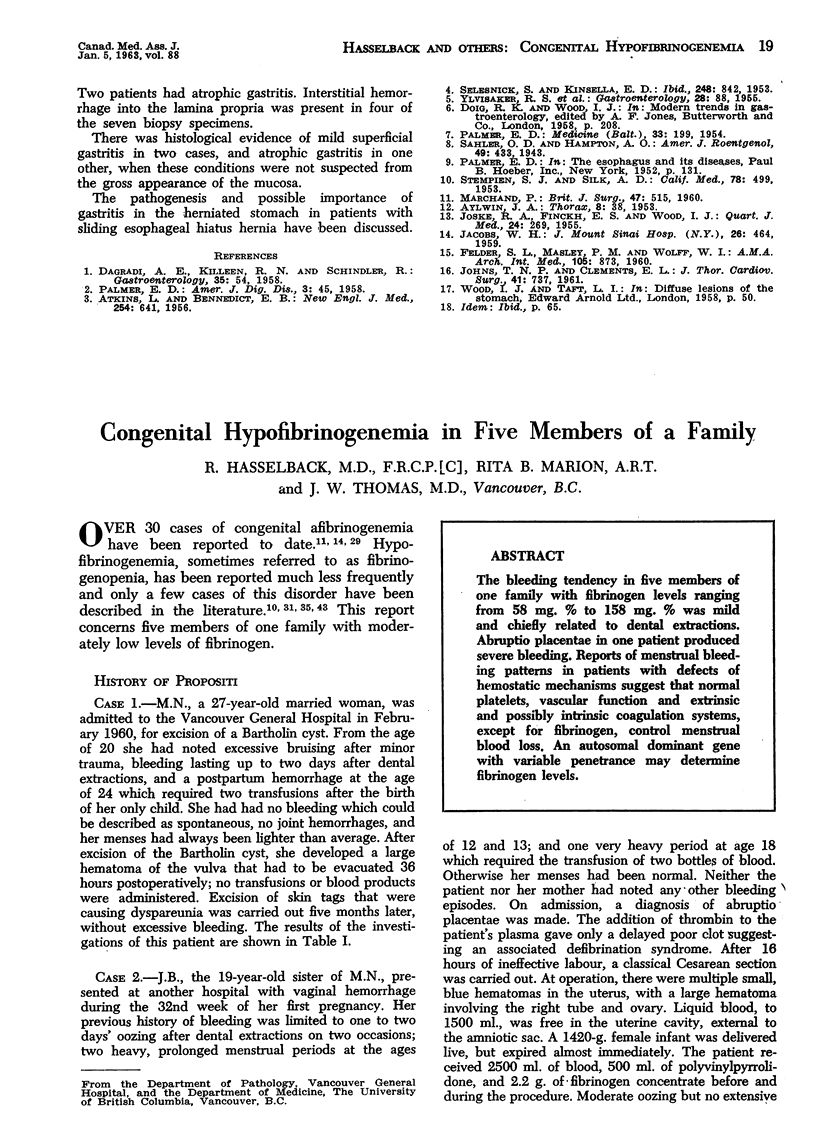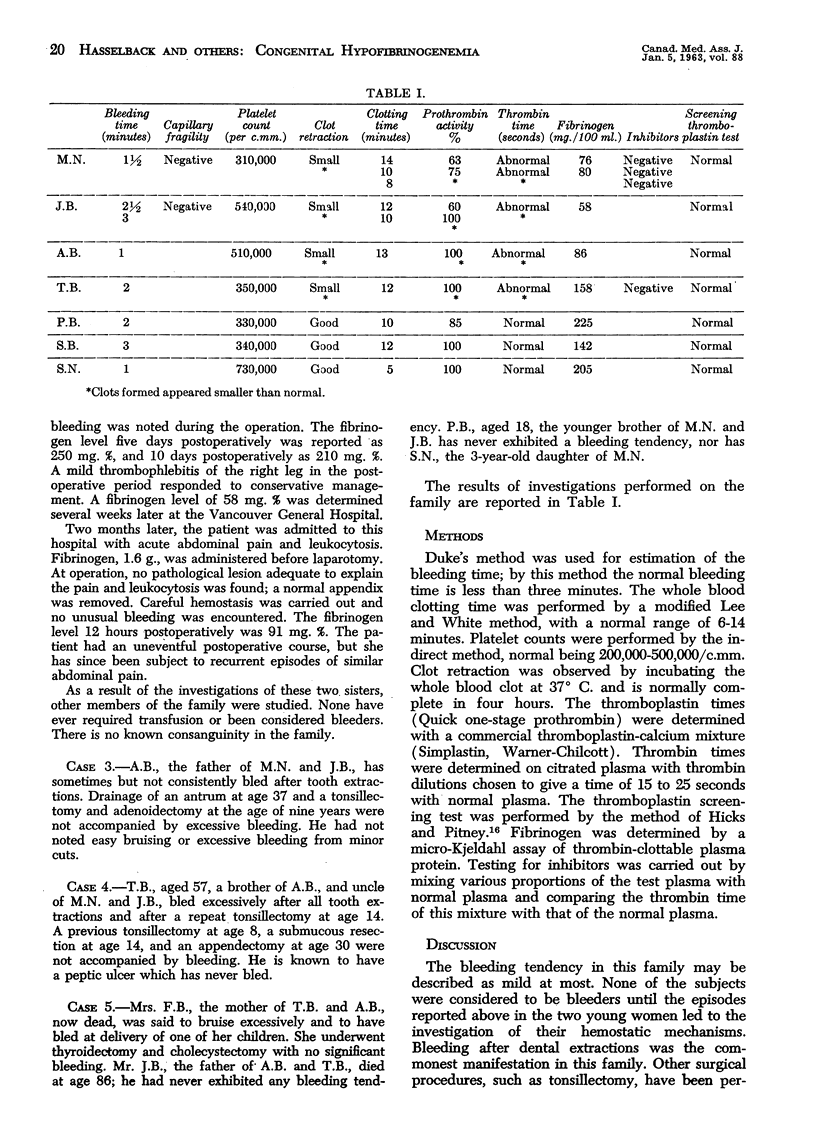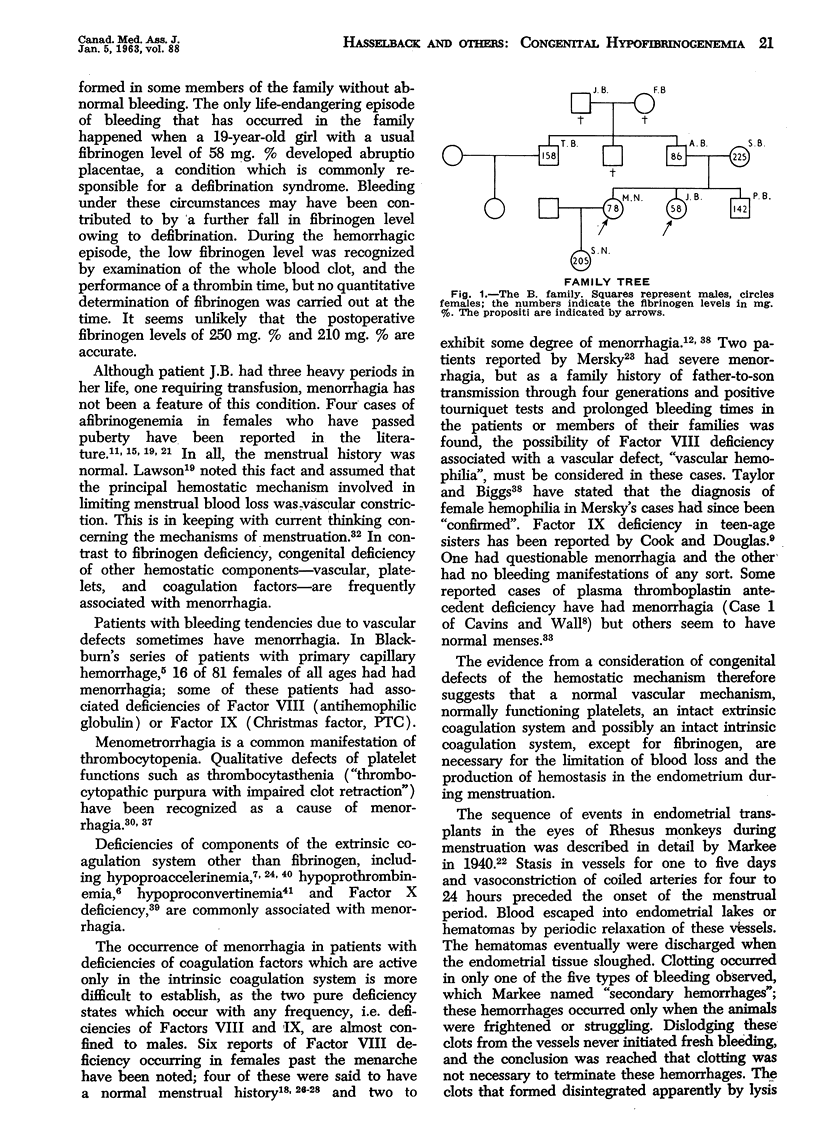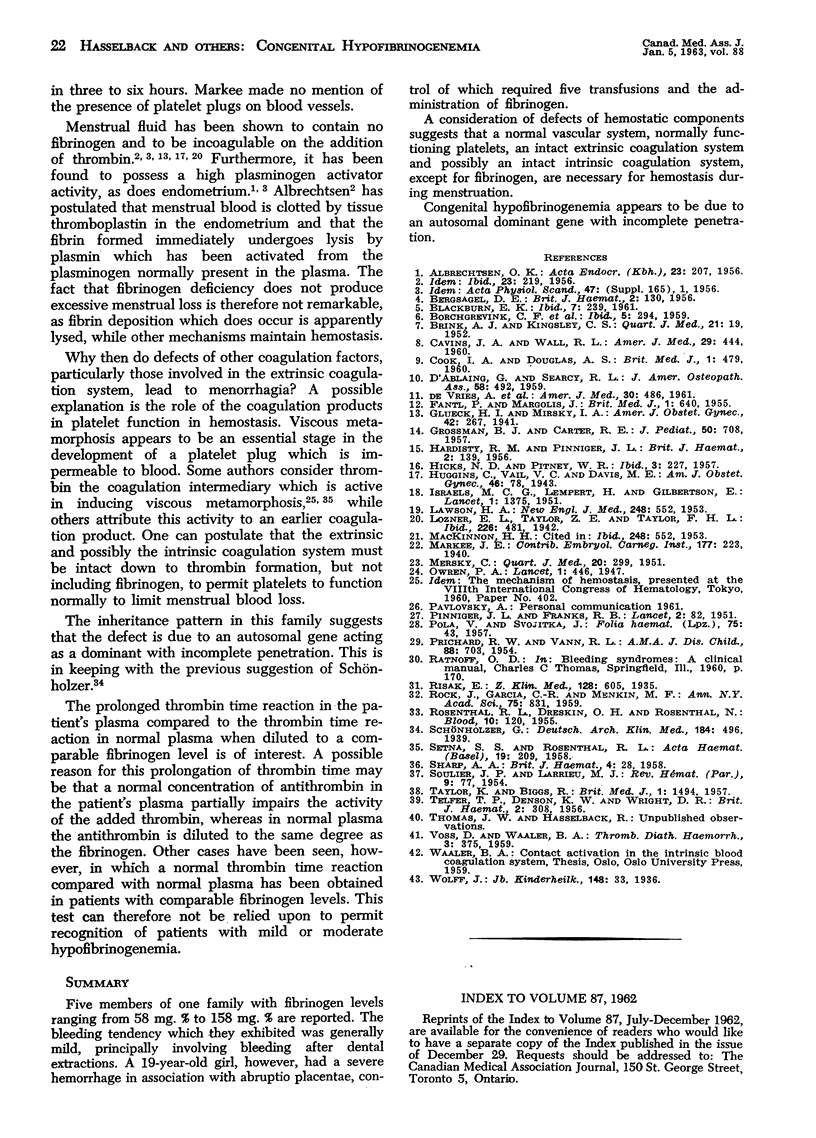Abstract
The bleeding tendency in five members of one family with fibrinogen levels ranging from 58 mg. % to 158 mg. % was mild and chiefly related to dental extractions. Abruptio placentae in one patient produced severe bleeding. Reports of menstrual bleeding patterns in patients with defects of hemostatic mechanisms suggest that normal platelets, vascular function and extrinsic and possibly intrinsic coagulation systems, except for fibrinogen, control menstrual blood loss. An autosomal dominant gene with variable penetrance may determine fibrinogen levels.
Full text
PDF



Selected References
These references are in PubMed. This may not be the complete list of references from this article.
- ALBRECHTSEN O. K. The fibrinolytic activity of the human endometrium. Acta Endocrinol (Copenh) 1956 Oct;23(2):207–218. doi: 10.1530/acta.0.0230207. [DOI] [PubMed] [Google Scholar]
- BERGSAGEL D. E. Viscous metamorphosis of platelets; morphological platelet changes induced by an intermediate product of blood thromboplastin formation. Br J Haematol. 1956 Apr;2(2):130–138. doi: 10.1111/j.1365-2141.1956.tb06821.x. [DOI] [PubMed] [Google Scholar]
- CAVINS J. A., WALL R. L. Clinical and laboratory studies of plasma thromboplastin antecedent deficiency (PTA). Am J Med. 1960 Sep;29:444–448. doi: 10.1016/0002-9343(60)90040-1. [DOI] [PubMed] [Google Scholar]
- D'ABLAING G., 3rd, SEARCY R. L. Congenital hypofibrinogenemia; laboratory evaluation of a case. J Am Osteopath Assoc. 1959 Apr;58(8):492–494. [PubMed] [Google Scholar]
- FANTL P., MARGOLIS J. Alpha-prothromboplastin deficiencies (haemophilia) of differing degrees in a mother and son. Br Med J. 1955 Mar 12;1(4914):640–642. doi: 10.1136/bmj.1.4914.640. [DOI] [PMC free article] [PubMed] [Google Scholar]
- GROSSMAN B. J., CARTER R. E. Congenital afibrinogenemia; report on a newborn infant without fibrinogen. J Pediatr. 1957 Jun;50(6):708–713. doi: 10.1016/s0022-3476(57)80308-4. [DOI] [PubMed] [Google Scholar]
- HARDISTY R. M., PINNIGER J. L. Congenital afibrinogenaemia; further observations on the blood coagulation mechanism. Br J Haematol. 1956 Apr;2(2):139–152. doi: 10.1111/j.1365-2141.1956.tb06822.x. [DOI] [PubMed] [Google Scholar]
- HICKS N. D., PITNEY W. R. A rapid screening test for disorders of thromboplastin generation. Br J Haematol. 1957 Apr;3(2):227–237. doi: 10.1111/j.1365-2141.1957.tb05790.x. [DOI] [PubMed] [Google Scholar]
- ISRAELS M. C. G., LEMPERT H., GILBERTSON E. Haemophilia in the female. Lancet. 1951 Jun 30;1(6670):1375–1380. doi: 10.1016/s0140-6736(51)92838-3. [DOI] [PubMed] [Google Scholar]
- PRICHARD R. W., VANN R. L. Congenital afibrinogenemia; report on a child without fibrinogen and review of the literature. AMA Am J Dis Child. 1954 Dec;88(6):703–710. [PubMed] [Google Scholar]
- ROCK J., GARCIA C. R., MENKIN M. F. A theory of menstruation. Ann N Y Acad Sci. 1959 Jan 9;75:831–839. doi: 10.1111/j.1749-6632.1959.tb44594.x. [DOI] [PubMed] [Google Scholar]
- ROSENTHAL R. L., DRESKIN O. H., ROSENTHAL N. Plasma thromboplastin antecedent (PTA) deficiency; clinical, coagulation, therapeutic and hereditary aspects of a new hemophilia-like disease. Blood. 1955 Feb;10(2):120–131. [PubMed] [Google Scholar]
- SENTA S. S., ROSENTHAL R. L. Intermediate stages in platelet alterations during coagulation. Acta Haematol. 1958 Apr-May;19(4-5):209–221. doi: 10.1159/000205436. [DOI] [PubMed] [Google Scholar]
- TELFER T. P., DENSON K. W., WRIGHT D. R. A new coagulation defect. Br J Haematol. 1956 Jul;2(3):308–316. doi: 10.1111/j.1365-2141.1956.tb06703.x. [DOI] [PubMed] [Google Scholar]


